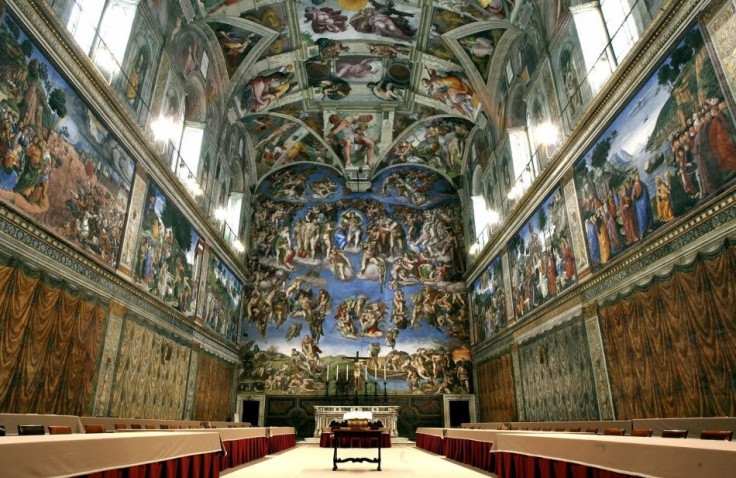Sistine Chapel Turns 500, Battles ‘Drunken Herds’

The Vatican honored Michelangelo’s ceiling frescoes at the Sistine Chapel Wednesday, 500 years to the day after Pope Julius II held an evening vespers service to unveil the masterpiece to the world. Four years in the making, Michelangelo’s interpretation of some of the Old Testament’s most powerful stories -- three each from the creation, the fall of Adam and Eve, and the story of Noah -- would go on to become some of the most iconic images in Western art, and while it was certainly the talk of the town in 1512, the Sistine Chapel is now known the world over. In fact, it’s so well known that as many as 20,000 tourists line up each day to take a peek, making the chapel, arguably, the most visited room in the world.
The Vatican marked the anniversary Wednesday by posing a question: Are the estimated 5 million annual visitors ruining Michelangelo’s work?
The argument first came to light in a scathing letter by Italian literary critic Pietro Citati that was posted in the pages of the Corriere della Sera newspaper last month. The open letter ignited a heated debate after Citati denounced the behavior of crowds visiting the sacred site, saying they “resemble drunken herds.”
"In the universal confusion no-one saw anything," he wrote.
The disrespectful tourists, he said, unwittingly damage the frescoes with their perspiration, body heat and breath, along with the particles of dust on their shoes.
At a vespers service Wednesday, Pope Benedict seemed to agree that the chapel had lost some of its majesty.
“When contemplated in prayer, the Sistine Chapel is even more beautiful, more authentic. It reveals itself in all its richness,” he said.
The director of the Vatican Museums, Antonio Paolucci, concurred, saying crowds may be hampering efforts made during a 14-year-long restoration project completed in 1994.
"Pressure caused by humans such as dust introduced, the humidity of bodies, carbon dioxide produced by perspiration can cause unease for the visitors, and in the long run, possible damage to the paintings," he wrote in the Vatican’s semi-official newspaper L'Osservatore Romano.
Paolucci said the Vatican is considering limiting access by putting a cap on the number of daily visitors.
“We will do this if the pressure from tourism were to increase beyond a reasonable level and if we were to fail in resolving the problem efficiently," Paolucci said. "It has a fatal attraction; it is an object of desire, that essential point of arrival for international museum people, for migrants of the so-called cultural tourism.”
The 135 by 44 foot chapel takes its name from Pope Sixtus IV, who commissioned it in 1475. While the Pope enlisted artists like Botticelli, Perugino and Ghirlandaio to decorate the walls, the ceiling featured only a blue sky with stars until Pope Julius II commissioned a reluctant Michelangelo, who at the time considered himself more of a sculptor than a painter.
The artist’s depiction of God reaching out to offer life to Adam is widely considered one of the most famous scenes in the history of art.
Paolucci said the Vatican had commissioned a “new, high-tech, radically innovative” air-purifying system to protect the work that will be “operative in a year.”
"Our era has not been graced with a new Michelangelo,” he warned, “but we have been graced with technology which allows us to preserve Michelangelo's work for the longest possible time."
© Copyright IBTimes 2025. All rights reserved.






















